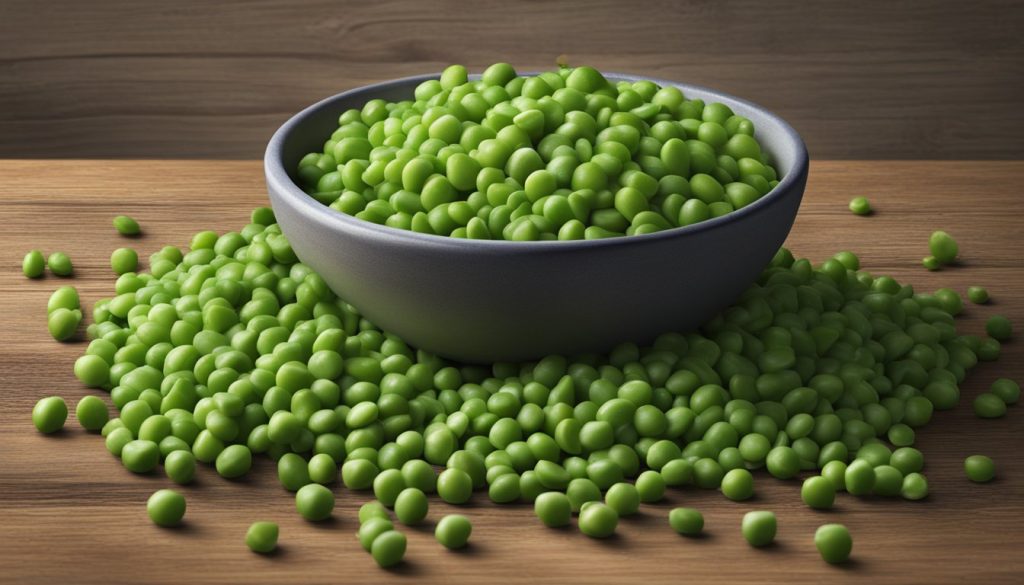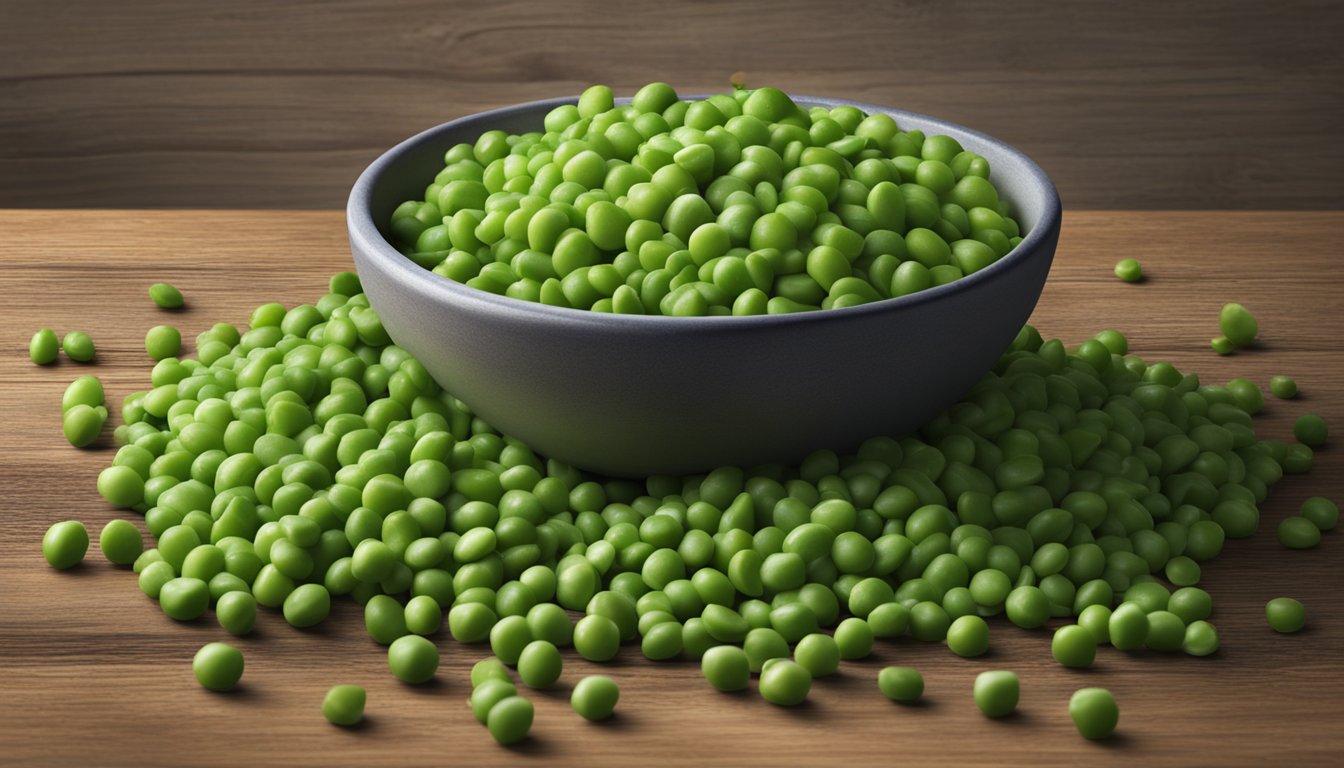Crowder peas are a beloved staple in Southern cooking, prized for their rich flavor and hearty texture. Suitable substitutes for crowder peas include black-eyed peas, pinkeye purple hull peas, white acre peas, and pinto beans. These alternatives offer similar nutritional profiles and can be easily incorporated into traditional recipes.

While crowder peas have a unique taste, several other legumes can provide comparable results in dishes. Black-eyed peas are particularly close in flavor and appearance, making them an excellent stand-in. Pinkeye purple hull peas and white acre peas are also viable options, especially for those seeking to maintain the authentic Southern flair in their cooking.
For those looking beyond peas, pinto beans can serve as a satisfactory substitute in many recipes. They offer a creamy texture when cooked and absorb flavors well. Regardless of the chosen alternative, these legumes contribute significant nutritional value, providing fiber, protein, and essential vitamins and minerals to meals.
Understanding Crowder Peas

Crowder peas, a type of legume, offer numerous nutritional benefits and culinary applications. These small, round peas are a staple in Southern cuisine and can be used in various dishes.
Nutritional Benefits
Crowder peas are packed with essential nutrients. They provide a good source of protein and fiber, making them an excellent choice for vegetarians and those looking to maintain a healthy diet. These legumes are rich in folate, which is crucial for cell growth and DNA synthesis.
Iron and vitamin A are also present in significant amounts, supporting healthy blood and vision. Crowder peas contain magnesium, calcium, and copper, contributing to bone health and enzyme function. Their antioxidant content helps protect cells from damage caused by free radicals.
Culinary Uses
Crowder peas are versatile in the kitchen. They can be used in salads, soups, and stews, adding texture and flavor to these dishes. In Southern cuisine, crowder peas are often paired with cornbread or incorporated into rice dishes.
A popular preparation is Hoppin’ John, a traditional New Year’s Day meal combining crowder peas with rice and bacon. These peas can be cooked fresh or dried, with dried peas requiring pre-soaking for faster cooking.
Their mild, earthy flavor complements a variety of seasonings and ingredients. Crowder peas can be served as a side dish or used as a protein-rich addition to vegetarian main courses.
Crowder Peas Substitutes Overview

Crowder peas can be replaced with several alternatives that maintain similar nutritional profiles and cooking properties. These substitutes offer comparable protein and fiber content while adapting to various recipes.
Criteria for Substitution
When selecting a crowder peas substitute, consider flavor, texture, and nutritional value. Black-eyed peas are a top choice due to their similar taste and appearance. They contain equivalent amounts of protein and dietary fiber.
Southern peas, also known as cowpeas, make an excellent replacement. They offer a comparable flavor profile and cooking time. Pinto beans provide a creamy texture when cooked and work well in soups and stews.
Lady peas and zipper peas are smaller legumes that can substitute for crowder peas in many dishes. They have a delicate flavor and tender texture.
For a quick alternative, canned varieties of these legumes are widely available. They reduce cooking time while still providing essential nutrients.
When substituting, adjust quantities as needed. Some alternatives may require more or less volume to achieve the desired consistency in recipes.
Legume-Based Substitutes

Legumes offer excellent alternatives to crowder peas, providing similar nutritional benefits and culinary versatility. These substitutes are rich in protein, fiber, and various micronutrients.
Black-Eyed Peas
Black-eyed peas are closely related to crowder peas and serve as an ideal substitute. They have a similar flavor profile and texture, making them easy to use in recipes that call for crowder peas.
Black-eyed peas are slightly larger, so adjust quantities accordingly. Use about 10-15% less when substituting for crowder peas.
These legumes are packed with protein and fiber. They also provide essential nutrients like folate, iron, and magnesium.
Black-eyed peas work well in soups, stews, and salads. They can be cooked fresh or used from canned varieties for convenience.
Pinto Beans
Pinto beans offer a creamy texture and mild, earthy flavor that complements many dishes. They are larger than crowder peas but can be used as a substitute in various recipes.
These beans are particularly suited for soups and stews. Their ability to absorb flavors makes them versatile in different cuisines.
Pinto beans are rich in protein and fiber. They also provide folate, iron, and magnesium.
For best results, soak dried pinto beans overnight before cooking. This reduces cooking time and improves digestibility.
Lima Beans
Lima beans, also known as butter beans, can replace crowder peas in many recipes. They have a creamy texture and slightly sweet flavor.
Fresh lima beans are preferable when available, but frozen or canned varieties work well too. They’re particularly good in soups, stews, and casseroles.
Lima beans are packed with nutrients. They’re an excellent source of:
- Protein
- Fiber
- Folate
- Iron
- Magnesium
When using lima beans as a substitute, consider their larger size. Use about 3/4 cup of lima beans for every cup of crowder peas called for in a recipe.
Southern Pink Lady Peas
Southern pink lady peas are a lesser-known but excellent substitute for crowder peas. They have a delicate, sweet flavor and tender texture.
These peas are popular in Southern cooking and work well in traditional recipes that call for crowder peas. They’re great in:
- Salads
- Soups
- Side dishes
Pink lady peas cook quickly, making them convenient for weeknight meals. They retain their shape well when cooked, adding visual appeal to dishes.
Like other legumes, pink lady peas are nutritious. They provide protein, fiber, and various vitamins and minerals.
Purple Hull Peas
Purple hull peas, including pinkeye purple hull peas, are another suitable substitute for crowder peas. They have a similar taste and texture, with a slightly sweeter flavor.
These peas are common in Southern cuisine and work well in traditional recipes. They’re versatile and can be used in:
- Soups
- Stews
- Salads
- Side dishes
Purple hull peas cook relatively quickly and maintain their shape well. They have a creamy texture when cooked, similar to crowder peas.
Nutritionally, purple hull peas are rich in protein, fiber, and various micronutrients. They’re a good source of folate, iron, and potassium.
Cannellini Beans
Cannellini beans, also known as white kidney beans, can substitute for crowder peas in many recipes. They have a mild, nutty flavor and creamy texture.
These beans work well in soups, stews, and salads. They’re larger than crowder peas, so adjust quantities accordingly.
Cannellini beans are nutrient-dense. They provide:
- Protein
- Fiber
- Iron
- Folate
- Magnesium
- Calcium
When using cannellini beans, consider their cooking time. They typically take longer to cook than crowder peas.
Navy Beans
White navy beans are small, oval-shaped legumes that can replace crowder peas in various dishes. They have a mild flavor and creamy texture when cooked.
Navy beans work well in:
- Soups
- Stews
- Baked dishes
- Salads
These beans are highly nutritious. They’re rich in protein, fiber, and various vitamins and minerals.
Navy beans may require longer cooking times than crowder peas. Soaking them overnight can help reduce cooking time and improve digestibility.
Borlotti and Cranberry Beans
Borlotti beans, also known as cranberry beans, are another suitable substitute for crowder peas. They have a nutty flavor and creamy texture when cooked.
Fresh cranberry beans are available seasonally and offer the best flavor. However, dried varieties work well too.
These beans are versatile and can be used in:
- Soups
- Stews
- Salads
- Side dishes
Borlotti beans are nutritious, providing protein, fiber, and various micronutrients. They’re particularly rich in iron and potassium.
When substituting for crowder peas, use slightly less borlotti beans as they’re larger. Adjust cooking times as needed, as these beans may take longer to cook.
Other Vegetable Substitutes

Crowder peas can be replaced with several nutritious vegetable options. These alternatives offer unique flavors and textures while providing essential nutrients.
Green Beans and Romano Beans
Green beans and romano beans make excellent substitutes for crowder peas. Green beans, also known as string beans or snap beans, are widely available and versatile. They have a crisp texture and mild flavor.
Kentucky Wonder beans, a variety of green beans, are particularly well-suited as a replacement. They have a tender, meaty texture and sweet taste. Romano beans, also called Italian flat beans, are broader and flatter than standard green beans. They have a rich, nutty flavor and substantial texture.
Fresh romano beans can be used in similar quantities as crowder peas in most recipes. Both green and romano beans are low in calories and high in fiber. They also provide vitamins A, C, and K.
Edamame
Edamame, or young soybeans, offer a protein-rich alternative to crowder peas. These bright green beans have a slightly sweet, nutty flavor and a firm texture. They’re typically sold frozen, either in or out of their pods.
Edamame contains all nine essential amino acids, making it a complete protein source. One cup of edamame provides about 8 grams of fiber and 17 grams of protein. It’s also rich in vitamins and minerals, including folate, vitamin K, and iron.
In recipes, use an equal amount of shelled edamame to replace crowder peas. They work well in salads, stir-fries, and as a side dish. Edamame can be boiled, steamed, or microwaved for easy preparation.
Fava Beans
Fava beans, also known as broad beans, are another nutritious substitute for crowder peas. These large, flat beans have a creamy texture and slightly sweet, nutty flavor. They’re often sold fresh in their pods or dried.
Fava beans are an excellent source of plant-based protein and fiber. A 1-cup serving provides about 13 grams of protein and 9 grams of dietary fiber. They’re also rich in folate, manganese, copper, and iron.
To use fava beans, remove them from their pods and outer skins. Fresh fava beans can be boiled, steamed, or sautéed. Dried fava beans should be soaked before cooking. Use them in soups, stews, salads, or as a side dish.
Cooking with Substitutes

When using substitutes for crowder peas, adjustments in cooking methods and ingredient pairings are key to achieving optimal results. Proper techniques ensure the substitutes blend seamlessly into recipes while complementing other flavors.
Adjustments in Recipes
Cooking times may vary when using substitutes like black-eyed peas or pinto beans. Soak dried legumes overnight to reduce cooking time and improve texture. For canned substitutes, reduce simmering time by 15-20 minutes.
Adjust liquid ratios as needed. Pinto beans typically absorb more liquid than crowder peas. Add 1/4 cup extra broth or water when using them in soups or stews.
Consider texture differences. Mash a portion of substitute legumes to mimic the creamy consistency of crowder peas in casseroles.
Use spices to enhance flavor profiles. Add a pinch of smoked paprika or cumin to bring out earthy notes in black-eyed pea substitutes.
Pairing with Other Ingredients
Substitute legumes pair well with traditional Southern ingredients. Combine them with collard greens or kale for a nutritious side dish.
Enhance flavors by adding smoked ham hock or bacon to soups and stews. This complements the earthiness of pinto beans or black-eyed peas.
Serve substitutes alongside cornbread for an authentic Southern meal. The slightly sweet cornbread balances the savory legumes.
For a vegetarian option, pair legume substitutes with roasted sweet potatoes and sautéed onions. This creates a hearty and flavorful dish.
Mix substitute legumes with diced tomatoes and bell peppers for a colorful and nutritious salad. Drizzle with olive oil and lemon juice dressing.
